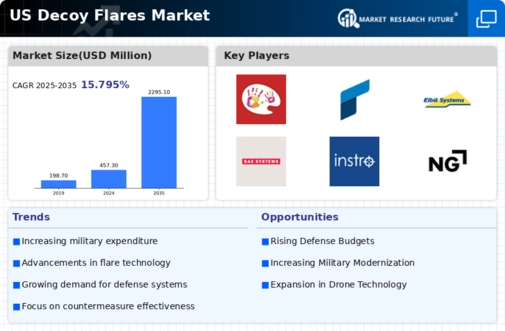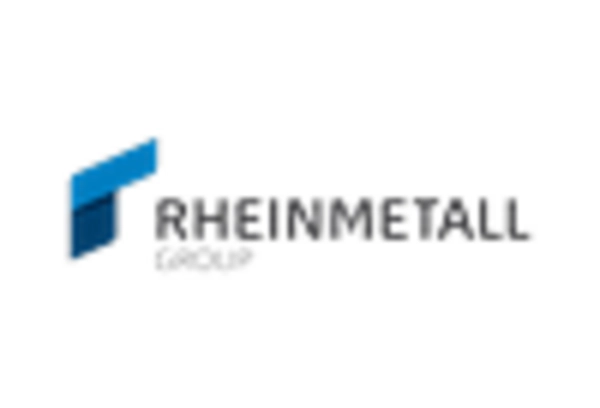Rising Military Expenditure
The decoy flares market is experiencing growth due to the increasing military expenditure in the US. As defense budgets rise, there is a heightened focus on enhancing military capabilities, including countermeasure systems. The US government allocated approximately $740 billion for defense in 2021, with projections indicating a steady increase in subsequent years. This financial commitment is likely to bolster the procurement of advanced decoy flares, which are essential for protecting aircraft from heat-seeking missiles. The emphasis on modernization and technological upgrades within the military further drives demand for sophisticated decoy systems, thereby positively impacting the decoy flares market.
Growing Demand from Allied Forces
The decoy flares market is also witnessing growth due to the increasing demand from allied forces. As international military collaborations strengthen, the need for standardized defense solutions becomes apparent. The US has been actively engaging in joint exercises and operations with allied nations, which often necessitates the use of compatible decoy flare systems. This collaborative approach not only enhances interoperability but also drives collective procurement efforts. The potential for shared technology and resources among allied forces is likely to further stimulate the decoy flares market, as nations seek to bolster their defense capabilities in unison.
Emerging Threats and Geopolitical Tensions
The decoy flares market is significantly influenced by the emergence of new threats and ongoing geopolitical tensions. As nations face evolving security challenges, the need for effective countermeasures becomes paramount. The US military is increasingly focused on addressing threats from advanced missile systems, which necessitates the deployment of reliable decoy flares. The ongoing tensions in various regions, including Eastern Europe and the Asia-Pacific, have prompted the US to enhance its defense posture, thereby driving demand for decoy flares. This strategic focus on deterrence and defense readiness is expected to sustain growth in the decoy flares market.
Increased Focus on Airborne Defense Systems
The decoy flares market is benefiting from an increased focus on airborne defense systems. As air superiority remains a critical component of military strategy, the US is investing in advanced aircraft and their associated defense mechanisms. Decoy flares are integral to these systems, providing essential protection against missile threats. The US Air Force has been actively modernizing its fleet, which includes the integration of advanced countermeasure systems. This trend is likely to drive demand for decoy flares, as military planners prioritize the safety and survivability of their aircraft in contested environments.
Technological Innovations in Countermeasures
Technological innovations play a crucial role in shaping the decoy flares market. The development of advanced materials and designs has led to the creation of more effective decoy flares that can better mimic the heat signature of aircraft. Innovations such as improved infrared signature and enhanced deployment mechanisms are likely to attract military interest. The US military's commitment to integrating cutting-edge technology into its defense systems further supports the growth of the decoy flares market. As new technologies emerge, the demand for upgraded decoy systems is expected to rise, reflecting the industry's adaptability to changing operational requirements.

















Leave a Comment